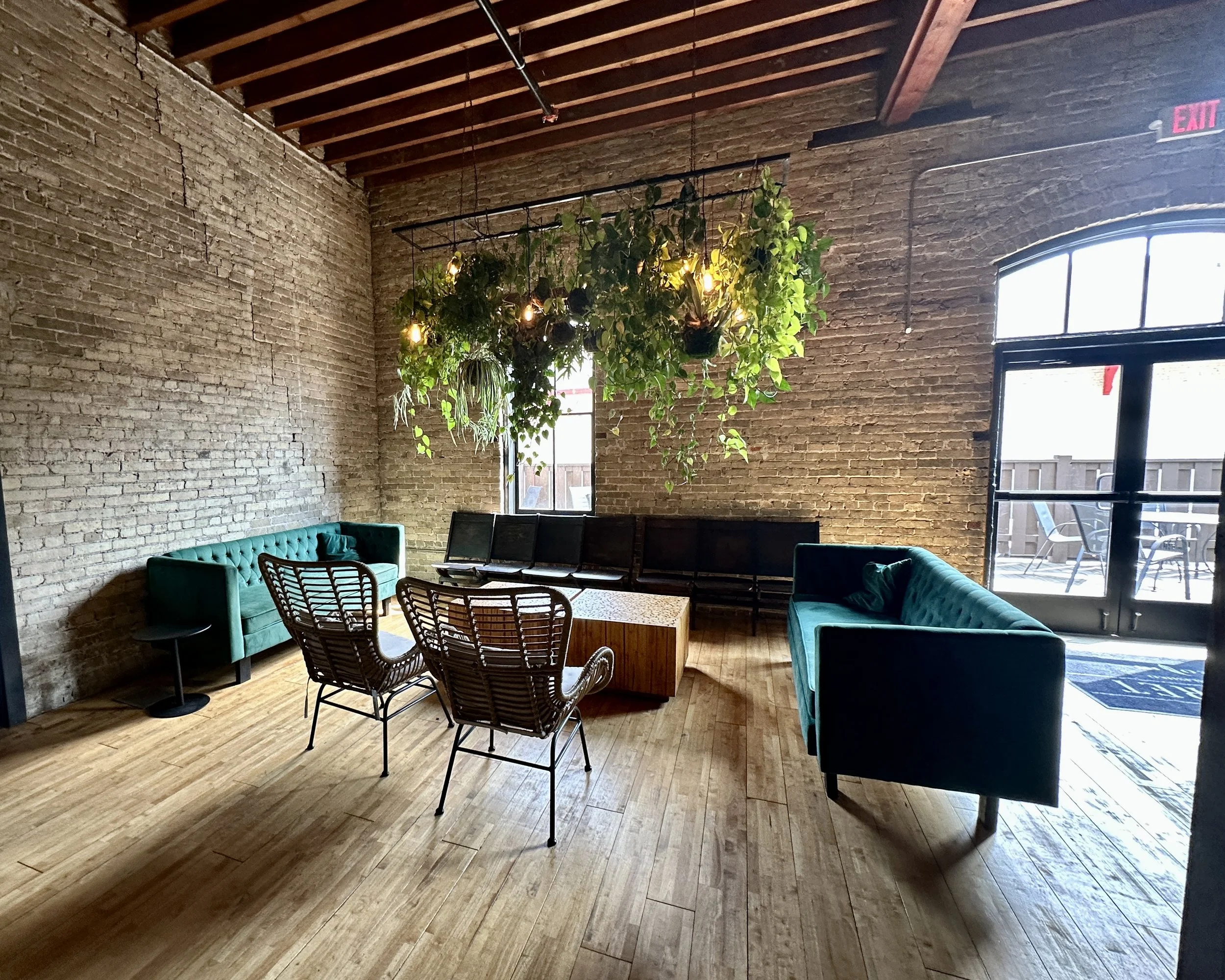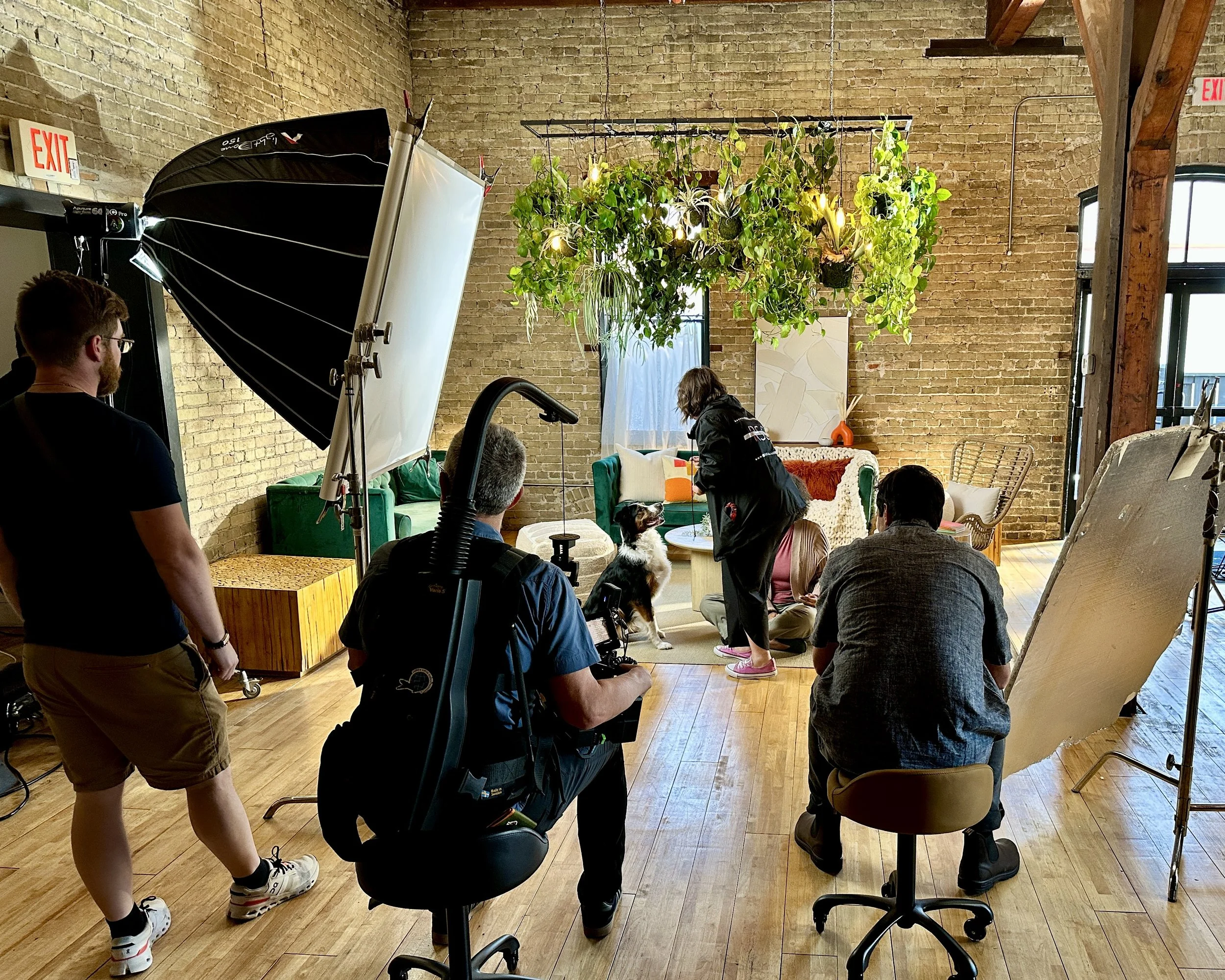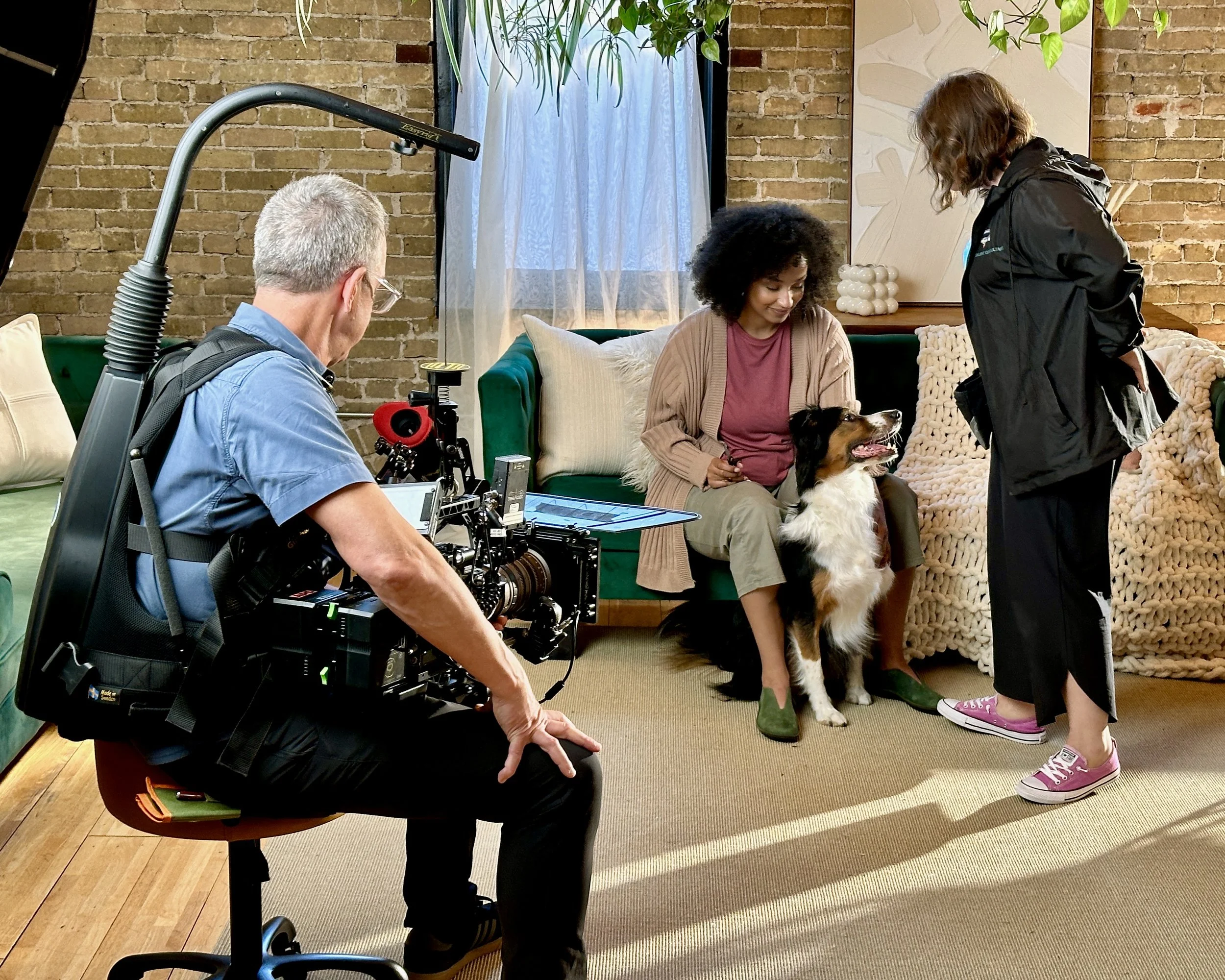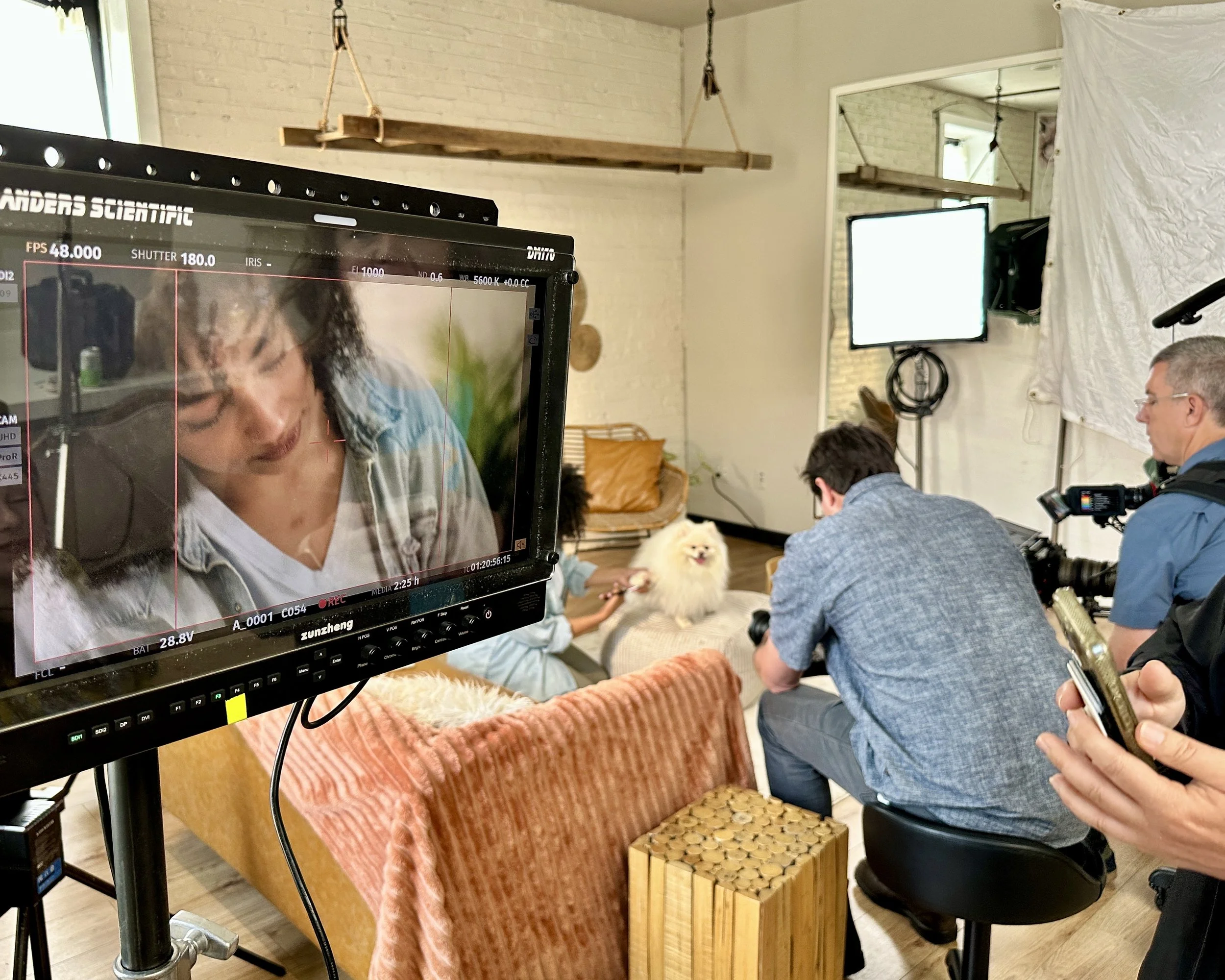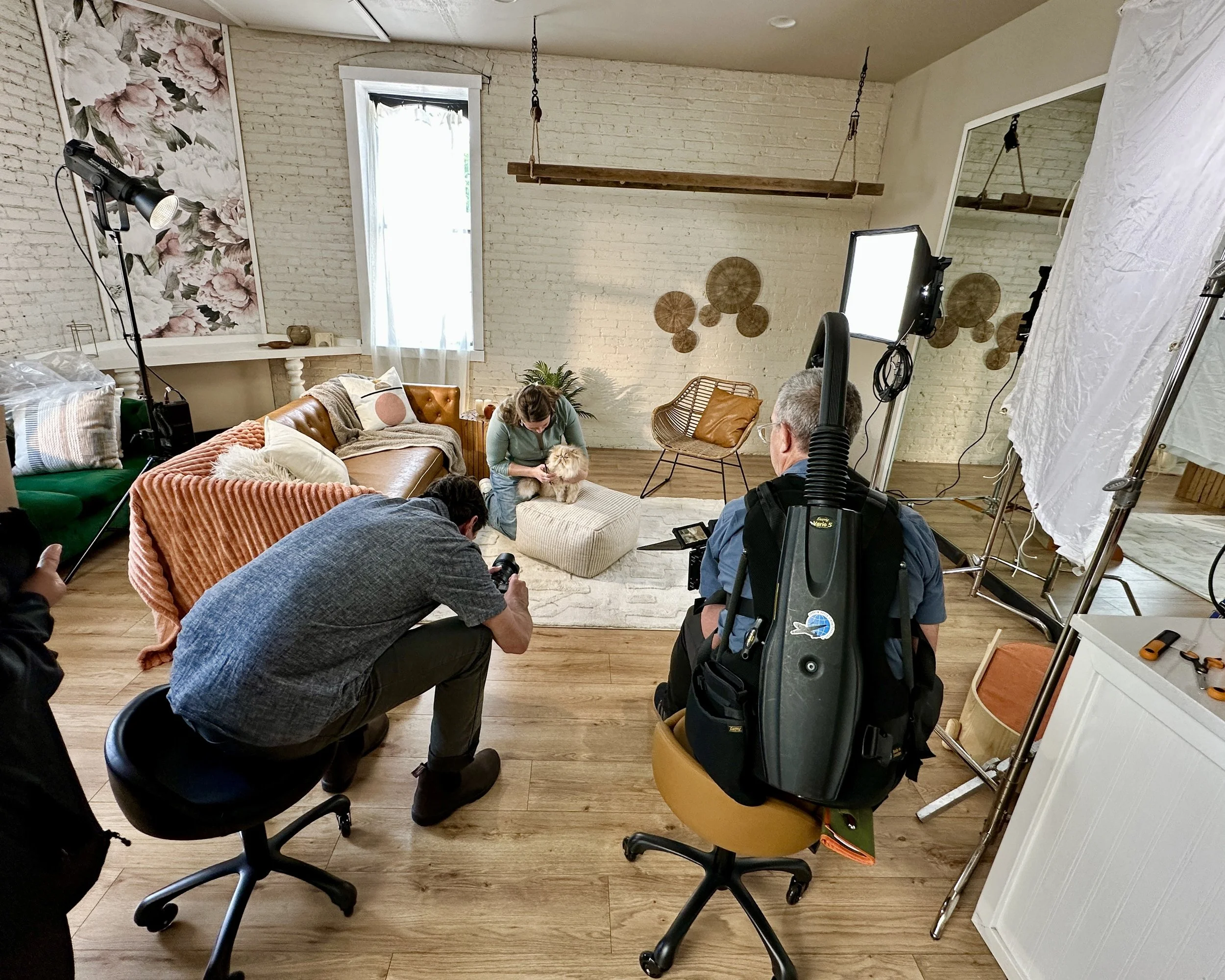Pawsitive Space
For the first time, Fiskars, one of the oldest continuously operating companies in the world, expanded their product line to include grooming tools for dogs and cats and allowed us to design a space that felt stylish, but was also pet-friendly and functional; a challenge many of us pet owners face in our own homes.
So how do you make a 100 year old tobacco warehouse-turned-event space into a contemporary urban loft for a day? Small touches go a long way. Scouting a vast 18,000 total square foot complex for elements that would create a cozy apartment style feel in two distinct spaces, presents a unique set of challenges.
This project was completed in July 2025.
Often, I like to think of styling a set by infusing elements that make the most impact with respect to budget and let my imagination flow. Fortunately, The Lageret in downtown Stoughton, Wisconsin had pre-existing elements that helped accentuate the vision. The main lobby featured a naturally day-lit corner, enhanced by cascading greenery suspended from the rafters. Plush velvet sofas set the stage for a chic backdrop against tall exposed brick walls.
When beginning a project in an expansive space, it’s easy to get carried away decorating like a made-for-TV home renovation reveal. Instead, I first turn my attention to the camera. What does the viewer see? What’s our crop ratio? It’s a bit like viewing a miniature dollhouse through a pinhole. Are there elements in the space jumping out and distracting you from what’s happening in the foreground? With this in mind, I started to whittle items down to a happy medium, losing a few throw pillows and a background vase to avoid an awkward tangent with someone’s head.
Assembling a space for a production takes a multi-dimensional approach. Cameras possess the power to either intensify the vibrancy of textures, colors, and subjects or, conversely, render decor as flat and uninteresting. Movement generates variability with every frame. Nailing that balance is crucial. The design needs to support and enhance the story, but not overshadow it. Managing wardrobe in this context, for instance, ensured complementary color palettes harmonized with the set's tone. In this case, neutral clothing with a casual relaxed fit was chosen to elevate the overall frame. Stripes or graphics, large or small, were avoided so as not to detract from the scene and, ultimately, the visibility of the product.
Much like a motivator on a children’s video production, an animal trainer was brought on to ensure the animals were comfortable and camera ready. Our team worked swiftly, since bringing live animals into the mix is understandably unpredictable. A few of the professional pet talent must have known they had some competition and were a bit vocal about it upon arrival. As they were carefully introduced to their human “owners” equipped with plenty of treats, we hit the ground running. Pivoting between shots or swapping out pets based on their comfort level on set was key. As a result, the natural connection filmed between our friendly human talent and their four-legged companions led to some really pure and authentic moments.
Over the years, I’ve learned that even with the most comprehensive sourcing and pre-planning, a space can take a wildly different aesthetic feel on camera than in-person. Production design is an intrinsically collaborative discipline. Building a successful project relies heavily on continuous, open communication with the photo crew, agency, and client. Actively vocalizing misalignments as they appear is a necessary component of quality control. Whether it’s an unexpected color clash detected by the camera sensor, a prop placement issue impacting focus, or stylistic details that diverge from the brand vision, transparency is essential in the shared commitment to the success of any campaign. Tackling a new set of variables and letting the creative process unfold organically is something that inspires me every time. Where will we go next?


